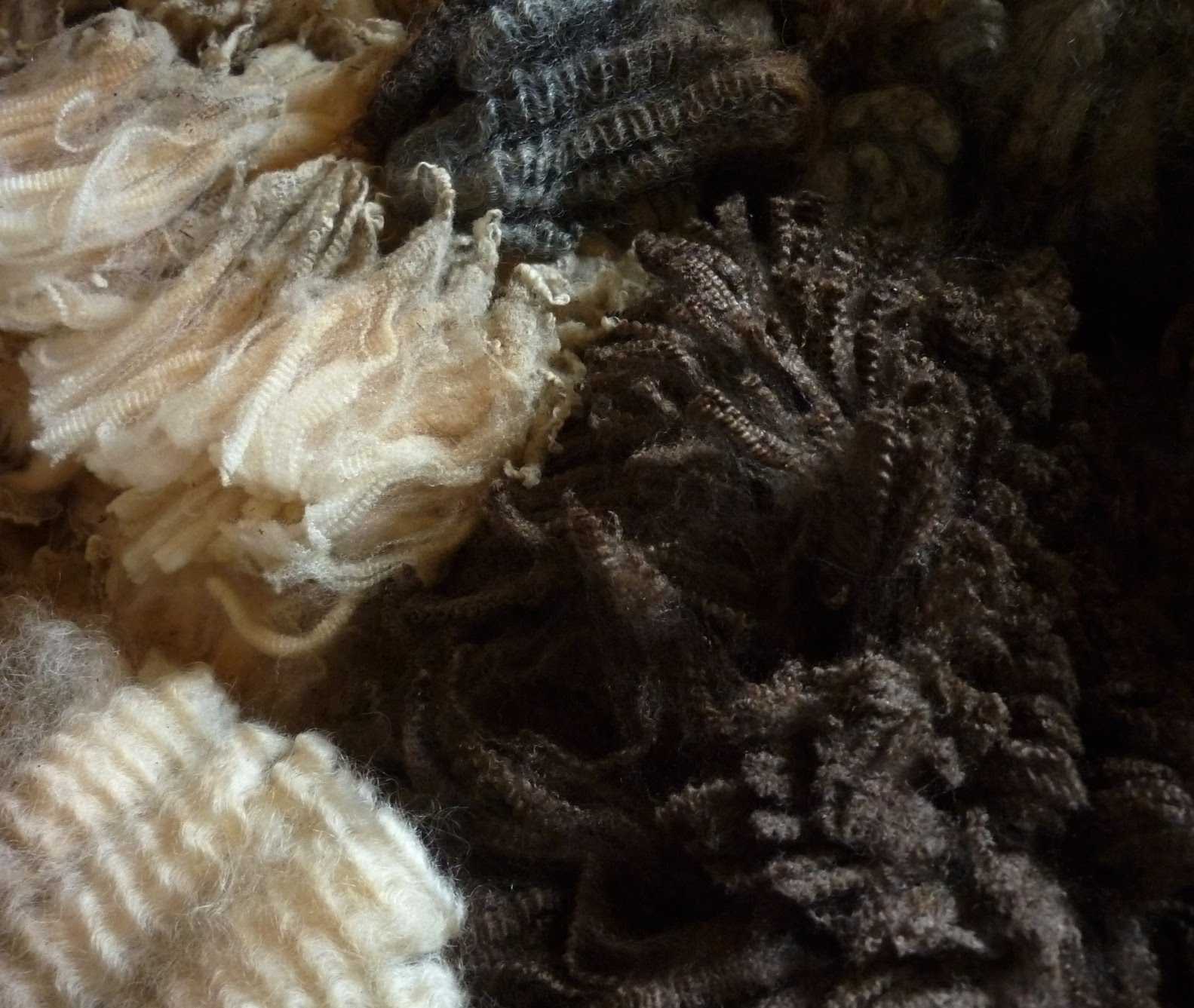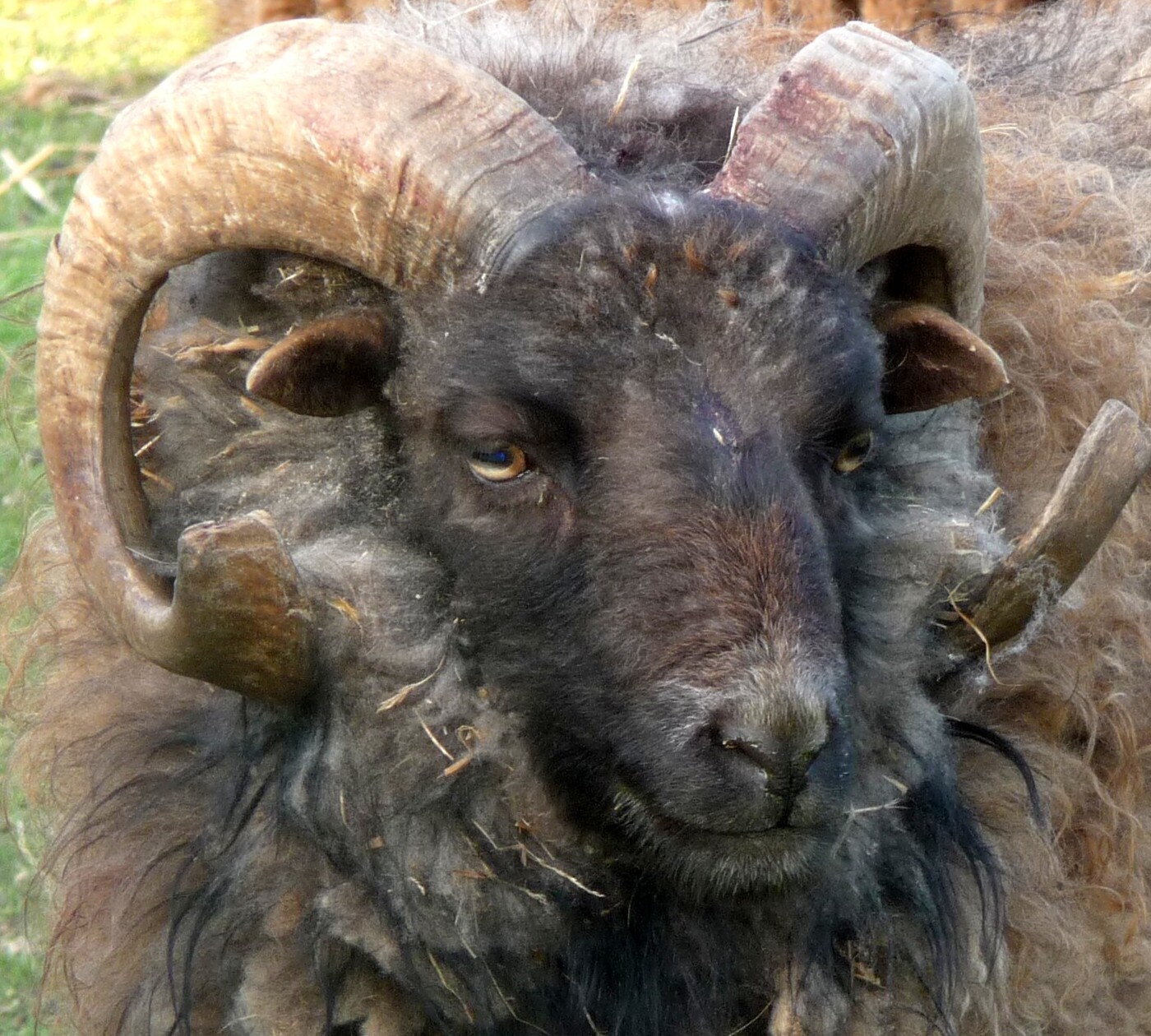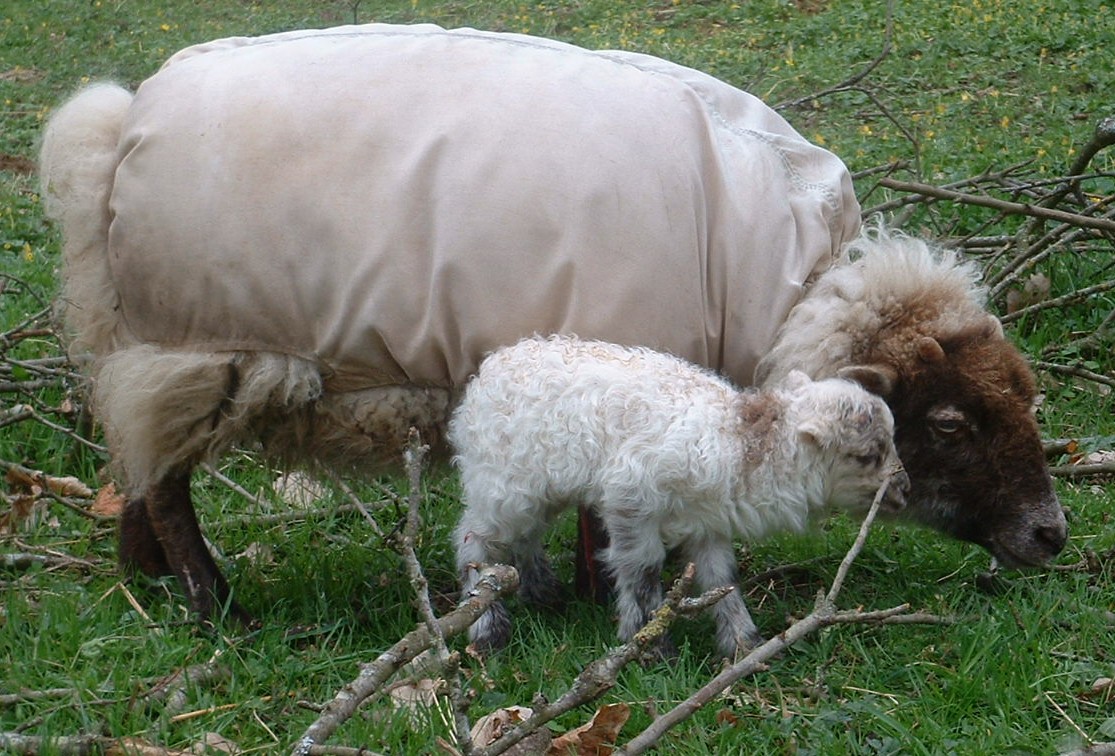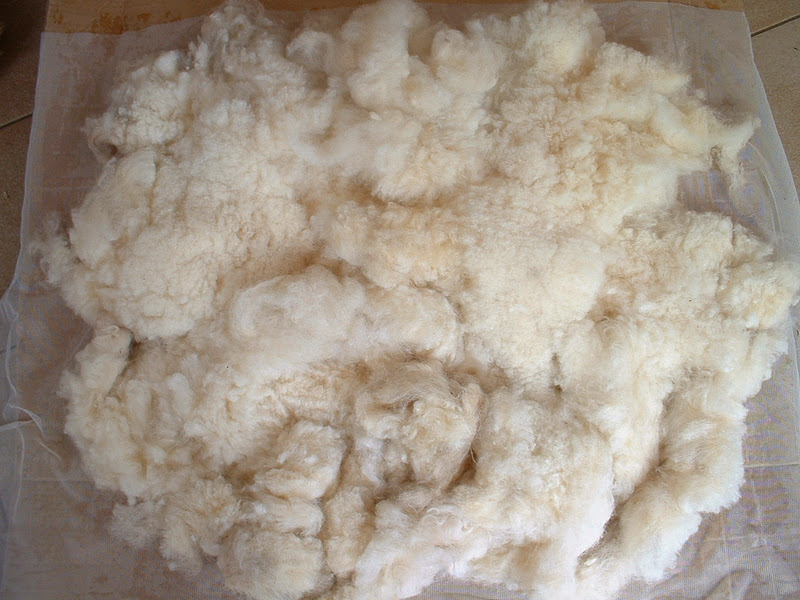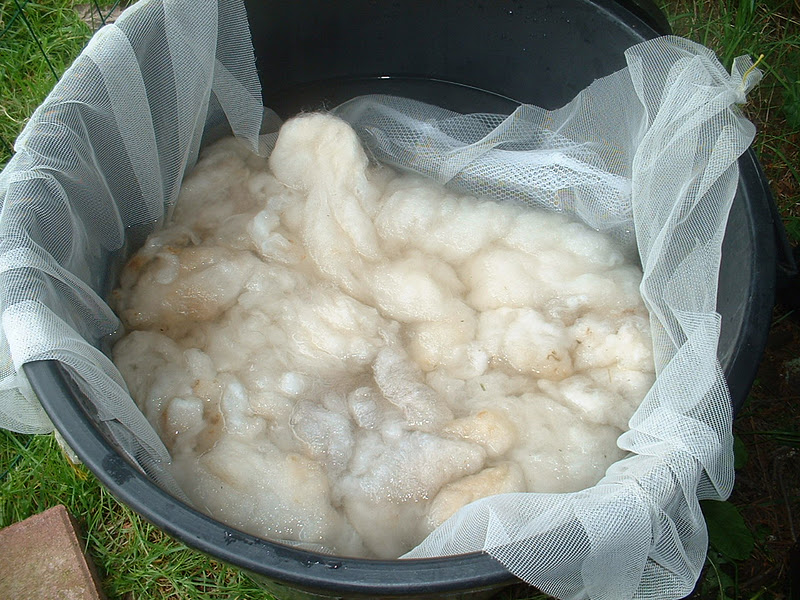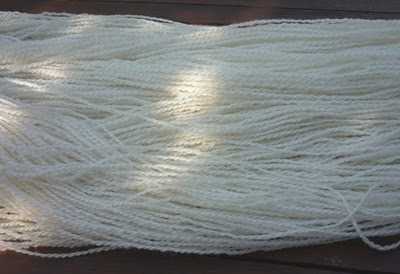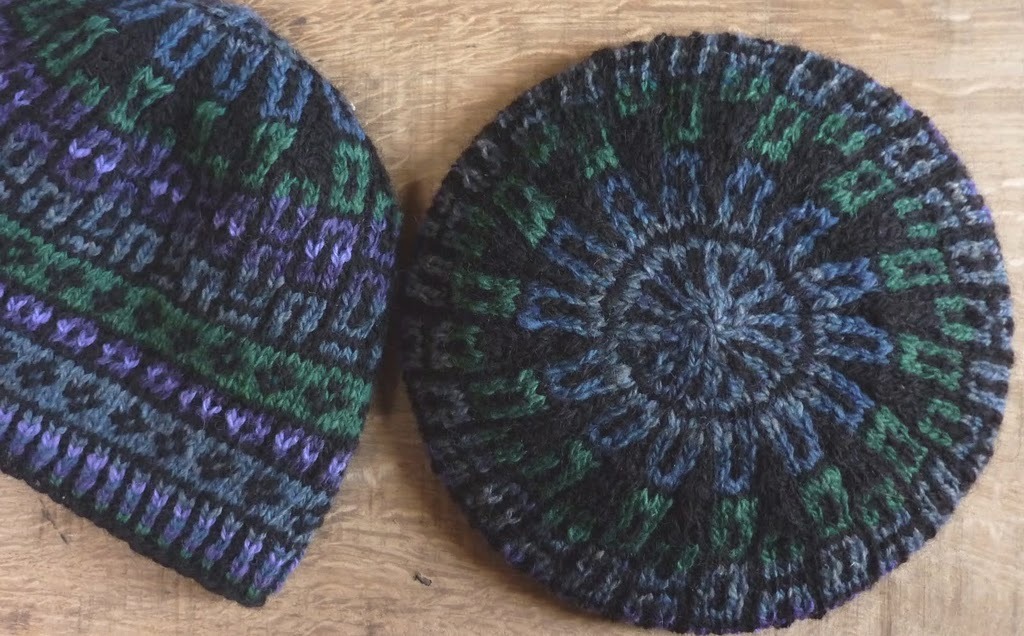I hope you are all enjoying our Wovember guests posts, and that it is proving interesting for you to share our exploration of the many stages which lie between wool growing on the back of a sheep and ending up as wearable clothes.
I feel strongly that the more transparent this process is, the harder it is for advertisers and marketers to describe non-wool textiles as wool, and the more we can understand the true value and provenance of what it is that we buy and wear.
We heard an industrial spinning story on Sunday from the wonderful Susan Crawford, detailing the whole story of sheep-to-skein from the perspective of developing a commercially-available, mill-spun knitting yarn. This was extremely exciting to me, as it means that – as a handknitter – I can now knit with yarns that can be traced back to a flock of sheep, a spinning mill, and a UK dyer. I also love this fact about the yarns stocked by Prick Your Finger.
However this evening, we shall hear about an even more small-scale and localised sheep-to-skein operation from talented Diane, AKA The Spinning Shepherd. It’s idealistic of me, I know, but I like to think of Diane’s stories covering the journey of sheep to shawl as being a kind of microcosm for the whole wool industry. In a perfect world, all wool be traceable back to animals with names like “Nougatine” and “Praline;” all sheep would be as doted on as Diane’s small flock clearly is; and all textiles would be made with the same eye for detail and quality craftsmanship which is evident in Diane’s knitted projects. Although we cannot realistically ever live in such a world, I think that large-scale textile production has much to learn from the smallholding, where care and attention are placed on every stage of the process, and where the whole journey from sheep-to-shoulders is rendered visible.
Excelana yarn is a brilliant example in which the same appreciation for animals, landscape, sustainability and heritage evidenced in a smallholding like Diane’s can be scaled up for the production of ethical, sustainable, commercially-available yarns; so, too, are the yarns produced in the USA at Juniper Moon Farm where the shearing of the sheep and the spinning of the yarn are shared and explained openly to the CSA share holders and to the general public via the blog…
…but I am running away here to bigger operations… let us return to the inspirational smallholding, where wool doesn’t even leave the farm in its journey from sheep-to-shoulders.
If you do not subscribe to Diane’s blog, I would like very much to suggest it as a necessary enrichment to your virtual, woolly library. Diane’s useful and thorough posts on topics such as how to remove suint from stored wool sit between posts about her ouessant sheep, and details re: her gorgeous knitted projects (Ravelry link) whose development can be traced back to them. I find Diane’s affection for her animals especially moving, and for me the clothes that she makes from her animals are special in ways which nothing anonymously produced and on sale on the High Street ever can be. My favourite thing about reading Diane’s blog is the slow sense of seasonal progression which emerges through following weeks and months of her writings.
“Wintry” window displays on the High St. featuring masses of polyester machine-knits – while referencing a system of seasonal clothing – have nothing to do with it in reality and the seasons of Fashion no longer run in time with the actual seasons and the way that things grow in accord with the sun and the rain. Following Diane’s blog is a great reminder that wool is a slow textile belonging to a slow wardrobe and that it is produced in accordance with the weather and the land. Perhaps this sense of the timings of the natural world is the one that Fashion industries and High St clothes shops can learn most about from smallholders, so that “this season’s Fashion” can once again have a connection to the real timings of plants and animals.
Diane keeps a small flock of ouessant sheep and kindly sent us some photos and words detailing the sheep-to-shoulders process as it occurs on her smallholding in Normandy. I asked her to write a bit about how wool begins life on a sheep and ends up as a hat or a shawl, and to provide dates, so that we may get a sense of the timescales involved in growing and processing one’s own wool. I was in for a lovely surprise, because Diane started with The Ram being introduced to the Ewes. This is when the wool begins, echoing Barbara Parry’s brilliant phrase “The Ram is Half the Sweater“. Here is Diane, The Spinning Shepherd. All photos and words © Diane.
All in the twinkle of an eye!
I love wool : 100% natural, 100% beautiful, 100% wool !
It’s true that I do have a bit of a preference for Ouessant wool. But, I have to say that I love wool in all of its many forms : from the unbelievable fineness of Merino to the beautiful luster of Lincoln Longwool. And let’s not forget Shetland and Corriedale and Romney and ….
..oh yes …. I love them all!
The special properties of sheep’s wool ensures it a place of honor among textile fibers.
But where does this exquisite fiber actually come from ?
What is the actual source of all those woolly balls of yarn that are used to create our lovely jumpers, scarves, and hats ?
For many a knitter, it all begins with a trip to the local yarn shop.
For the spinner, it’s a freshly shorn fleece.
But for the shepherd, it begins on a crisp autumn day.
With a cool breeze blowing … leaves crunching underfoot ….
and the knowing sparkle in the eye of a ram …
Yes, it’s breeding season ! In French we call it the “Season of Love” : La saison des amours !
After much thought and consideration, the shepherd has put together the breeding groups. And just 5 months later … the first lambs will be born.
With green pastures in the summer and plenty of hay in the winter this little lamb will grow and mature under the watchful eye of the shepherd, producing a lovely fleece. And the following spring, this lamb will be shorn for the first time.
Ultimately, every fleece is the end result of 12 months of wool growth and everything that is involved in caring for the sheep during this period.
In many respects it is a labor or love.
But what a beautiful reward for a spinning shepherd!
Although there are many different ways to prepare a fleece for spinning, I would like to show you how I work with my ouessant fleeces.
Before spinning, this fleece is skirted to removed any undesirable bits and pieces. Then it is left to soak in a large tub of cold rain water for 1 week. This will gently remove the suint from the wool and leave only the small amount of lanolin that is naturally found in an ouessant fleece.
Then, the wool is rinsed in rain water and dried outside on a screen. Even with just cold rain water, this fleece has come out sparkling white.
Once dry, the wool is ready to be prepared for spinning. I personally prefer combing wool which removes any lingering vegetable matter and short cuts from the longer wool fibers.
Now that the fiber has been prepared, it’s time to spin !
Fortunately for the Spinning Shepherd, ouessant sheep come in many lovely natural colors.
Of course, just the right knitting pattern is needed to show off such a lovely selection of naturaly colored wool. I chose the “Stained Glass Hat” from Green Mountain Spinnery.
And whether you prefer the subtle charm of naturally colored sheep’s wool or the stunning beauty of dyed wool …
… remember that it all begins on a crisp autumn day with the knowing sparkle in the eye of a ram.
